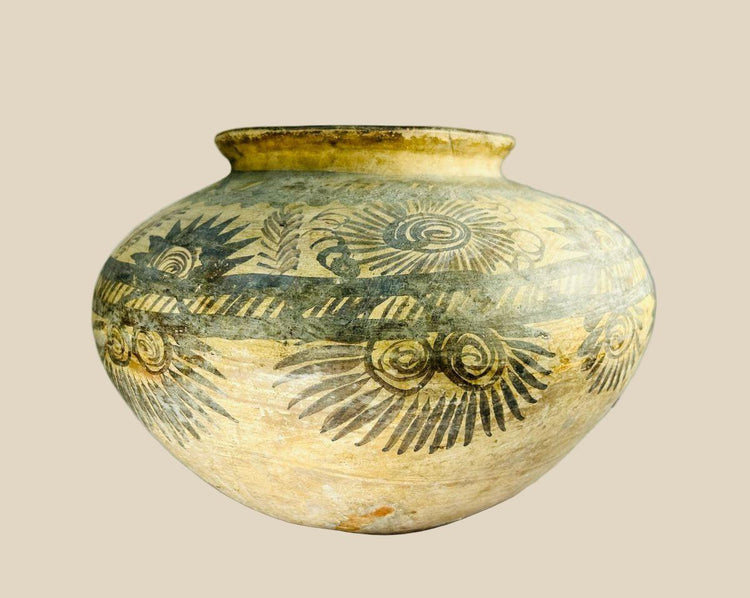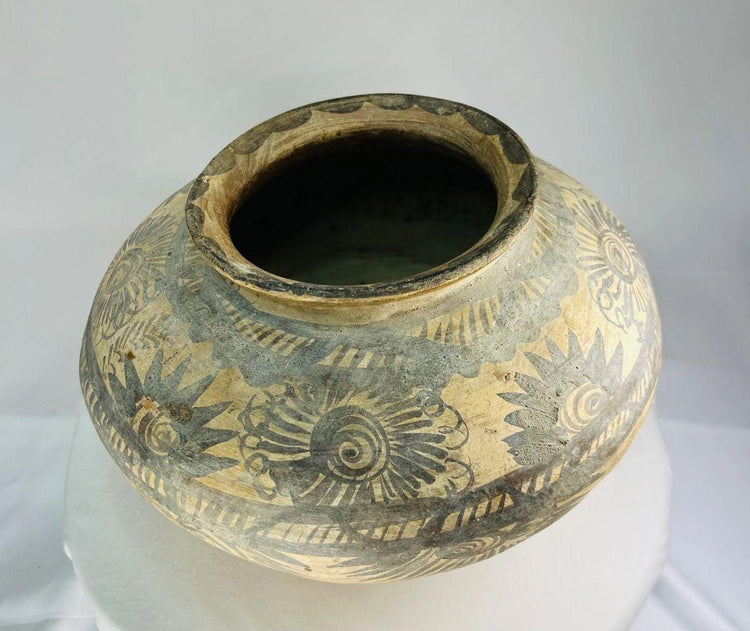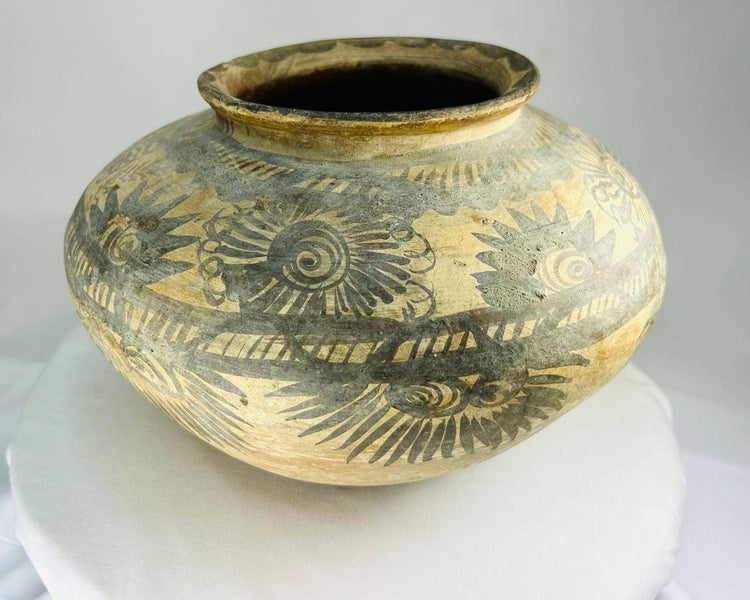Neolithic European Ceramic Vessel | Painted Terracotta Jar | Circa 5500–4500 BCE
Description
More
Less
Historical Context & Origin
Region: Neolithic Europe (likely Linear Pottery Culture [LBK] or Vinča Culture)
Material: Hand-molded terracotta with painted decoration
Period: Circa 5500–4500 BCE
Description
This rare Neolithic European painted pottery vessel represents one of the earliest artistic achievements of agrarian civilization. Crafted from terracotta and adorned with spiral, floral, and geometric motifs, the vessel reflects the transition from nomadic life to settled farming communities. Its bulbous form, narrow neck, and wide rim suggest dual use for both ritual and domestic storage, symbolizing fertility, life, and spiritual renewal. With its original painted surface preserved under a rich patina, this artifact captures the spirit of prehistoric European craftsmanship. The symmetry and balance of its design demonstrate a sophisticated understanding of proportion, color, and symbolism long before written history.
Features
- Authentic hand-painted Neolithic terracotta vessel
- Intricate spiral, floral, and geometric designs symbolizing fertility and life cycles
- Wide-rimmed bulbous body ideal for ritual or ceremonial use
- Rich surface patina and preservation consistent with 7,000 years of age
Cultural Significance
Pottery such as this was essential to early European farming cultures, used in rituals tied to fertility, harvest, and ancestry. Its painted symbols mirror humanity’s earliest artistic expressions and the dawn of spiritual belief systems in Neolithic Europe.
Condition
Excellent ancient condition with expected surface wear and pigment fading due to millennia of burial. Stable structure with visible original paint and natural aging consistent with archaeological finds.
Dimensions (approximate)
Height: 8.5 in
Width: 10.5 in
Age
Circa 5500–4500 BCE
Learn More
Read More About Neolithic Pottery From The University of Florida: Clay: The Entanglement of Earth in the Age of Clay
Discover More About The Neolithic Period From Britannica: Neolithic Anthropology
Description
Historical Context & Origin
Region: Neolithic Europe (likely Linear Pottery Culture [LBK] or Vinča Culture)
Material: Hand-molded terracotta with painted decoration
Period: Circa 5500–4500 BCE
Description
This rare Neolithic European painted pottery vessel represents one of the earliest artistic achievements of agrarian civilization. Crafted from terracotta and adorned with spiral, floral, and geometric motifs, the vessel reflects the transition from nomadic life to settled farming communities. Its bulbous form, narrow neck, and wide rim suggest dual use for both ritual and domestic storage, symbolizing fertility, life, and spiritual renewal. With its original painted surface preserved under a rich patina, this artifact captures the spirit of prehistoric European craftsmanship. The symmetry and balance of its design demonstrate a sophisticated understanding of proportion, color, and symbolism long before written history.
Features
- Authentic hand-painted Neolithic terracotta vessel
- Intricate spiral, floral, and geometric designs symbolizing fertility and life cycles
- Wide-rimmed bulbous body ideal for ritual or ceremonial use
- Rich surface patina and preservation consistent with 7,000 years of age
Cultural Significance
Pottery such as this was essential to early European farming cultures, used in rituals tied to fertility, harvest, and ancestry. Its painted symbols mirror humanity’s earliest artistic expressions and the dawn of spiritual belief systems in Neolithic Europe.
Condition
Excellent ancient condition with expected surface wear and pigment fading due to millennia of burial. Stable structure with visible original paint and natural aging consistent with archaeological finds.
Dimensions (approximate)
Height: 8.5 in
Width: 10.5 in
Age
Circa 5500–4500 BCE
Learn More
Read More About Neolithic Pottery From The University of Florida: Clay: The Entanglement of Earth in the Age of Clay
Discover More About The Neolithic Period From Britannica: Neolithic Anthropology
You May Also Like






















